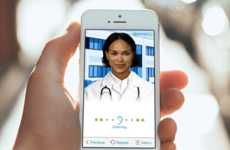
This Infographic From Live Science Discusses Identifying Ebola Symptons
Alyson Wyers — October 27, 2014 — Lifestyle
References: livescience & designtaxi
This infographic on ebola symptoms explains what to do if you get the disease. From Live Science, 'What Happens When You Think You Might Have Ebola?' is aimed particularly at people who have recently traveled to a country affected by virus disease.
It notes anyone coming into the United States from Ebola-affected nations receives an instruction packet including a digital thermometer to self-monitor and help detect ebola symptoms.
This includes keeping an eye out for signs of fever, headaches and body aches for three weeks as well as checking your temperature twice a day. The infographic also suggests if you reach a fever of 100.4 Fahrenheit of 38 Celsius to contact your state health department, the CDC or call 911 in an emergency.
It notes anyone coming into the United States from Ebola-affected nations receives an instruction packet including a digital thermometer to self-monitor and help detect ebola symptoms.
This includes keeping an eye out for signs of fever, headaches and body aches for three weeks as well as checking your temperature twice a day. The infographic also suggests if you reach a fever of 100.4 Fahrenheit of 38 Celsius to contact your state health department, the CDC or call 911 in an emergency.
Trend Themes
1. Digital Self-monitoring - Opportunity for developing digital tools and technology to aid in self-monitoring of symptoms.
2. Remote Disease Detection - Potential to create remote disease detection systems using digital thermometers and other sensors.
3. Healthcare Education Infographics - Growing demand for informative infographics to educate people about disease symptoms and prevention measures.
Industry Implications
1. Healthcare Technology - Disruptive innovation opportunity for healthcare technology companies to develop digital tools for self-monitoring and remote disease detection.
2. Telemedicine - Opportunity to integrate digital thermometers and other remote monitoring devices into telemedicine services for disease detection.
3. Healthcare Education - Demand for healthcare education providers to create informative infographics to educate people about disease symptoms and prevention measures.
0.8
Score
Popularity
Activity
Freshness























